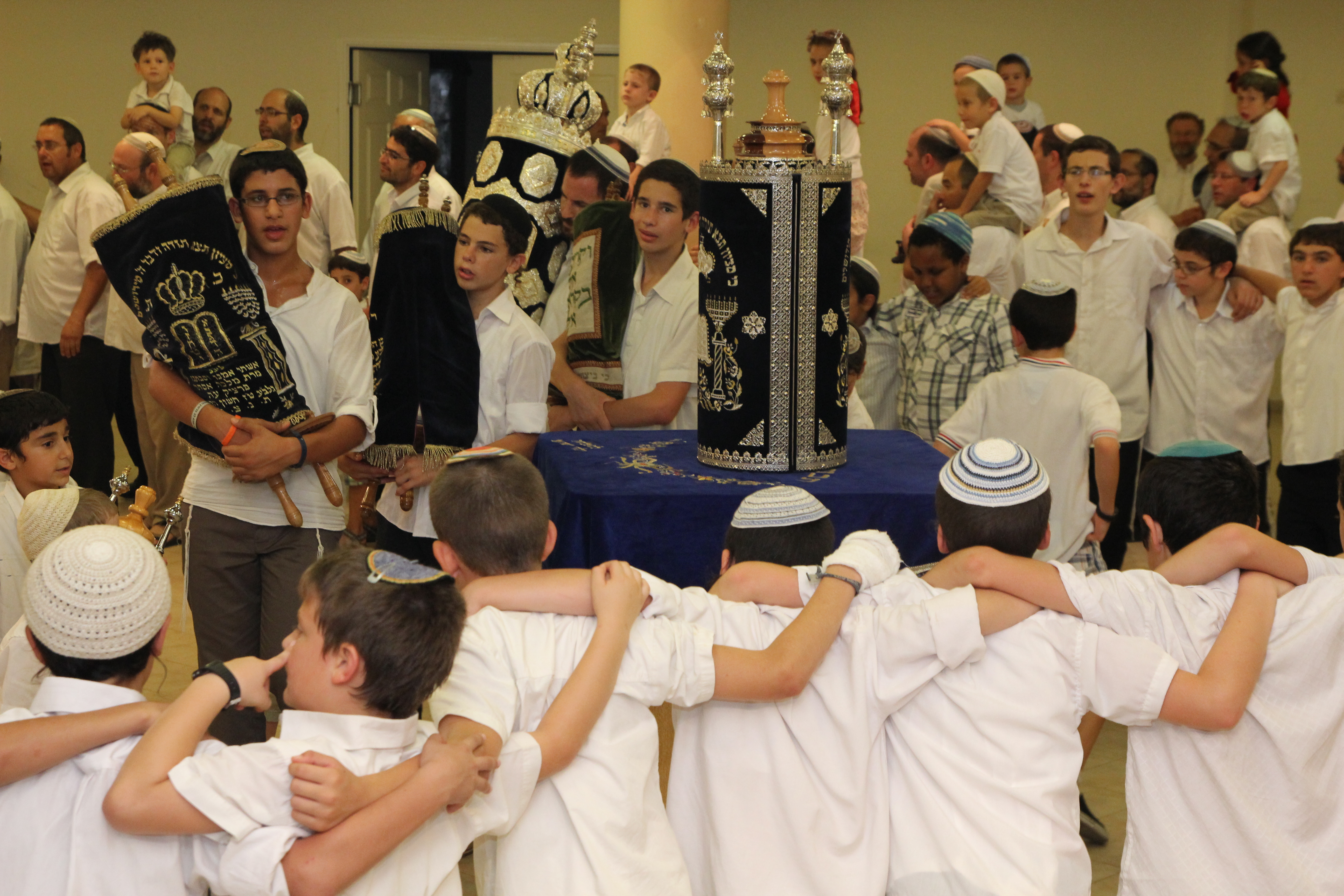What appears to be the last day of Sukkot, and what in the Diaspora is the “second” day of Shmini Atzeret, is called Simchat Torah, literally “the joy of/over Torah.” On every Shabbos during the year we read a portion of the Torah (The Pentateuch), called a “Parsha.” Simchat Torah is the day we complete the cycle by reading the final Parsha in the Torah, which is known as “V’zot HaBracha.” Additionally, Simchat Torah marks the renewal of the cycle as we begin again with the first Parsha in the Torah, which is known as “Breishit.”
The central theme of this holiday is our rejoicing over the Torah and our completion of the Torah. There are several unique customs on this day. Firstly, in contrast to Shabbos and regular holidays when one or two Torah scrolls are removed from the ark, on this day, most congregations have the custom to take out all of the scrolls. After the scrolls are removed, we are told in Shulchan Aruch (Orech Chaim 669) that they are carried round and around the “Bima,” the special “table” located in the center of the sanctuary upon which the Torah is read. These circlings are called “Hakafot.” This is done for the purpose of rejoicing over the scrolls. The Siddur of the Ba’al HaTanya adds that the custom is to make seven of these joyous Hakafot and to sing and dance before the scrolls with great joy and exultation.
Immediately following the Hakafot we begin the Torah reading. Typically, on most holidays and on the Shabbos, between five and seven people are called to the Torah to follow with the leader. [These are called “Aliyot.”] On Simchat Torah, however, the accepted custom is to include everyone present in the reading. The Mishna Brurah writes that even the children (who normally are not called to the Torah until they are thirteen) are all collectively given an Aliya in order to educate them in the reading of the Torah. After the final Aliya [called the Chatan Torah, literally the “Bridegroom of the Torah”] has been called and the final section of the Torah has been completed, we immediately begin the cycle over again by reading the first portion of Breishit which describes the creation of the universe and the first Shabbos. In many congregations, the custom is that everybody reads aloud the verse that concludes each day of creation as well as the verses which talk about Shabbos. One of the reasons for this custom, according to the Ta’amei HaMinhagim, is to demonstrate that besides the joy we feel because we have the beautiful gift of Torah, we also feel privileged to be believers in the creation.
The Gemara in the tractate of Brachot tells us that “from the day of the destruction of the Temple and henceforth, the only thing remaining for G-d is the Halacha – the law of the Torah.” At first glance, this statement seems puzzling: Who could take away any part of the world from G-d, the Creator of everything? The Sefer HaToda’ah takes up this question. He writes that the answer is that the Divine Presence of G-d can only manifest itself in a place where there is joy and completeness [without any destruction]. From the time of the destruction of the Temple, the entire world was considered incomplete and in a state of destruction. Even the Mitzvot lack their full potency. The only thing that remains unaffected by the destruction of the Temple was the Law of the Torah – Halacha. It is only through Torah study that we can achieve true joy. Thus, when we rejoice over the Torah on Simchat Torah, the Divine Presence of G-d rejoices with us.
May we merit this Simchat Torah to truly rejoice over the Torah and grow in our appreciation of Torah so that the Divine Presence may once again dwell in our midst.
